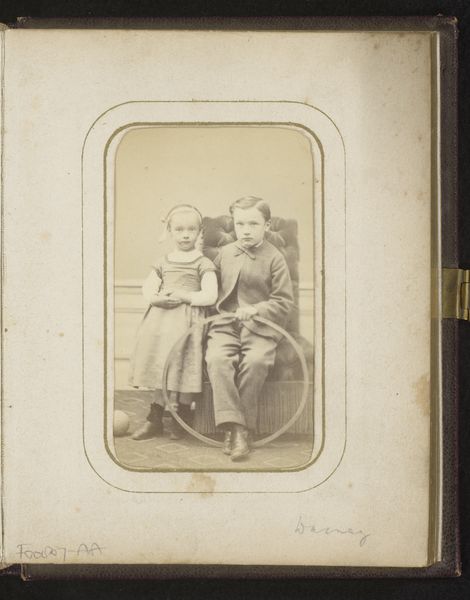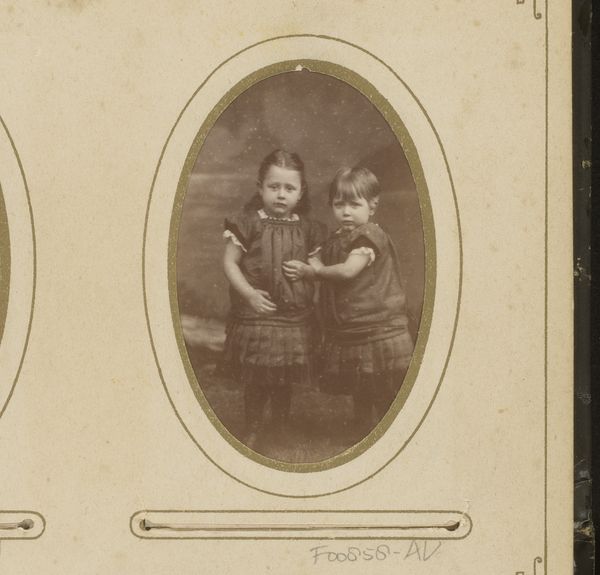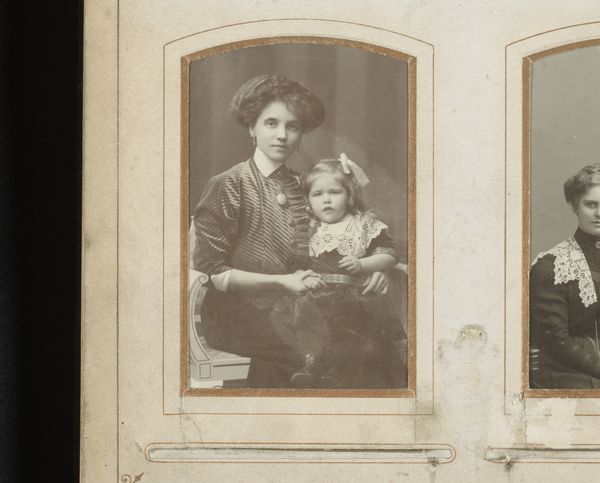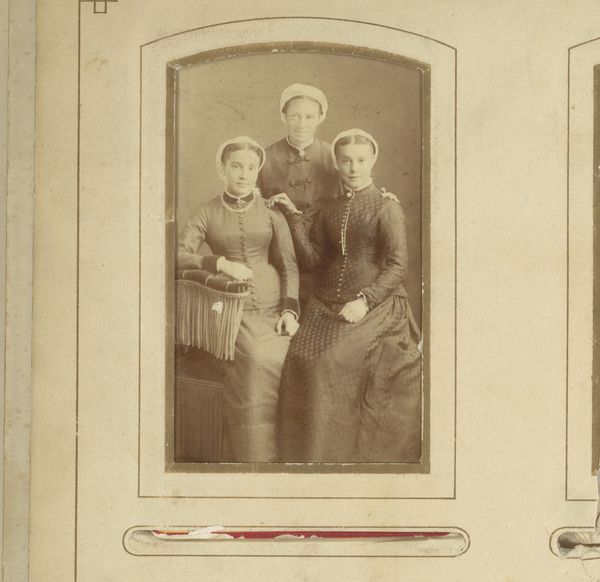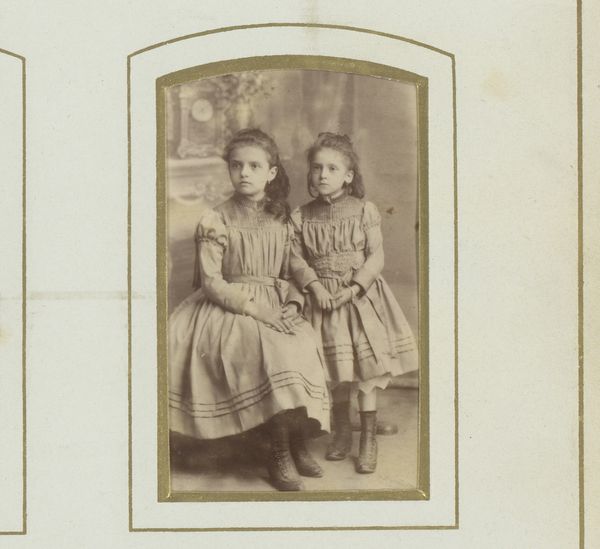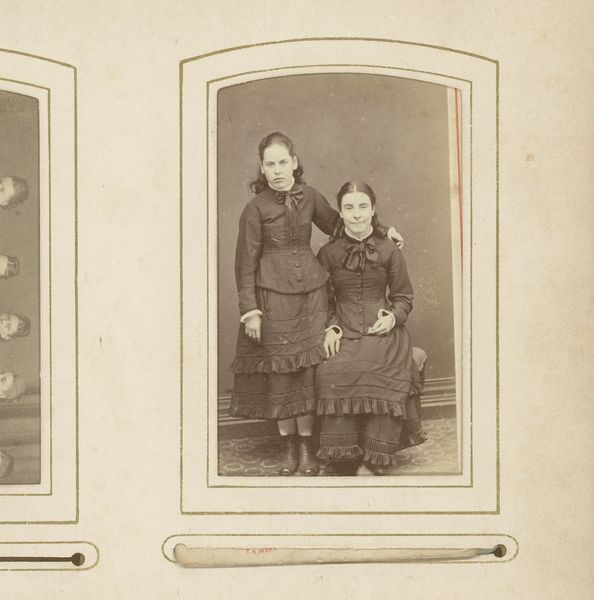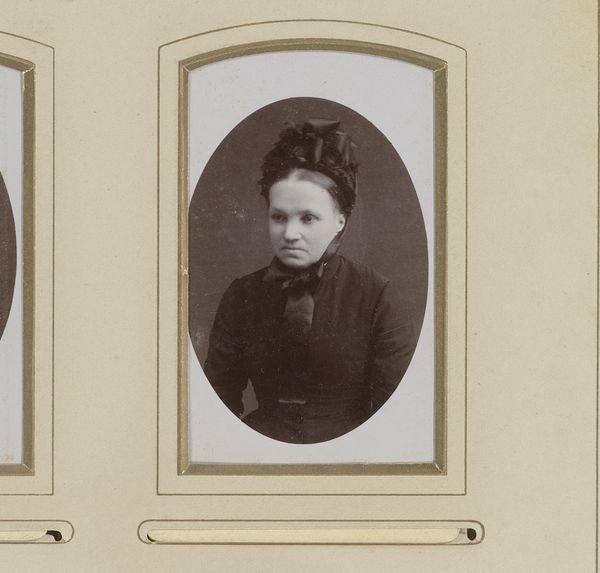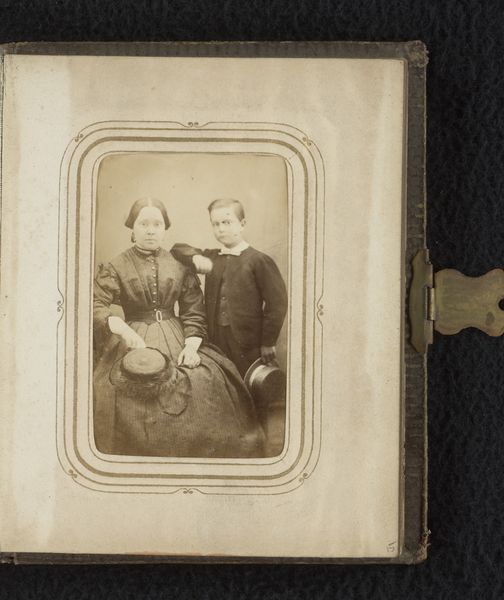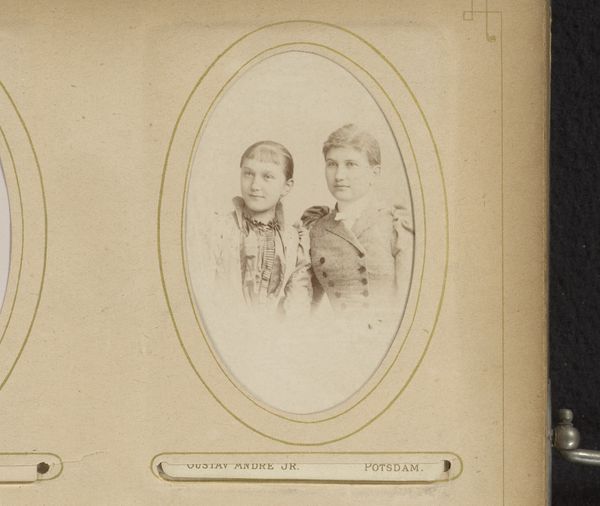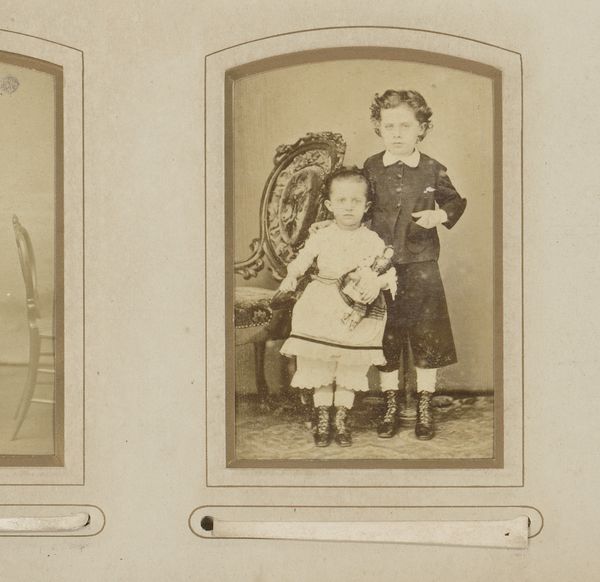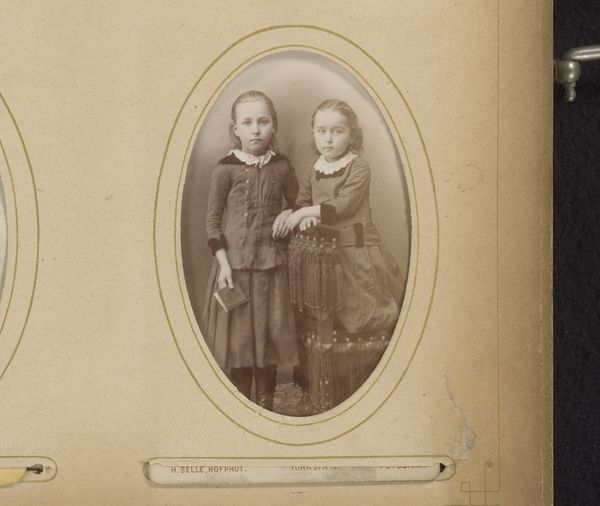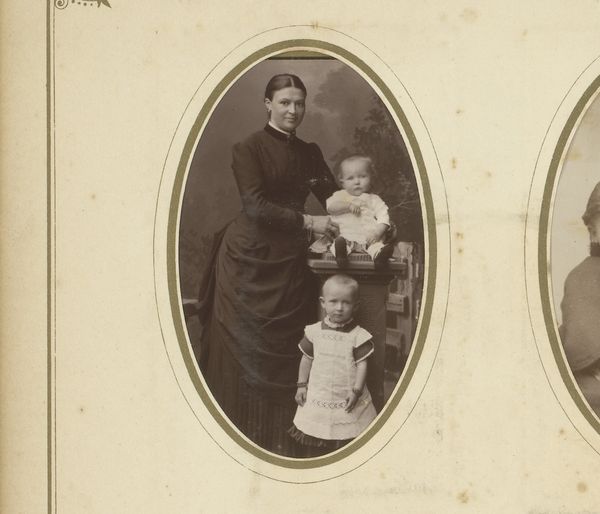
paper, photography
#
portrait
#
paper
#
photography
#
genre-painting
Dimensions: height 81 mm, width 50 mm
Copyright: Rijks Museum: Open Domain
Curator: Here we have a fascinating piece, "Portret van een meisje en een jongen, de jongen staat op een stoel," dating from 1882 to 1887 by Ferdinand Salm. It's an albumen print on paper. Editor: It’s quite austere, isn't it? The somber tones and formal poses give it a sense of Victorian restraint and…perhaps, suppressed emotion? Curator: Indeed. Thinking about the materiality, the albumen process involved coating paper with egg white to create a glossy surface, crucial for sharpness and detail in early photography. The consumption of eggs for this process reflects the commercial demands of the emerging photography industry. Editor: Precisely! And these portraits were tools for solidifying class and gender roles. Note how the older girl seems positioned to be caring. Early photography allowed those who had access to it a way of publicly stating who they are. They were asserting their roles, in a way performing their place within society, quite intentionally! Curator: Right. Photography became relatively accessible and offered opportunities for self-representation beyond the elite circles previously able to commission painted portraits. And think of the labor involved; preparing the chemicals, the prints, the final mounting. Each of these photographs represented not just an image but a commodity of great worth to those who could afford it. Editor: And yet, consider the young boy standing on a chair – such a precarious symbol of elevated status. He has to be propped up, supported literally, by societal structure and convention. It reflects ideas around childhood and dependency but also performance. Curator: And within that controlled studio environment, those textures—the fabric of their clothing, the slightly blurry softness around their faces—speak volumes about the photographic processes available. Editor: Absolutely. It gives us a window into how photographic portraiture was used to maintain or aspire to positions within a social hierarchy and the relationship between the privileged who could obtain such portraits and how laboring people sought such photographs to mark personal events. These images helped people to create a history and tell a story, real or imagined. Curator: It's the intersection of process, social expectation, and the photographer’s eye. A potent combination, making the mundane somehow monumental. Editor: A thought-provoking image, raising complex ideas about the democratization and commercialization of art and what constitutes it, where performance, identity, history, and aspiration merge in this relatively early, widely accessible photographic portrait.
Comments
No comments
Be the first to comment and join the conversation on the ultimate creative platform.
